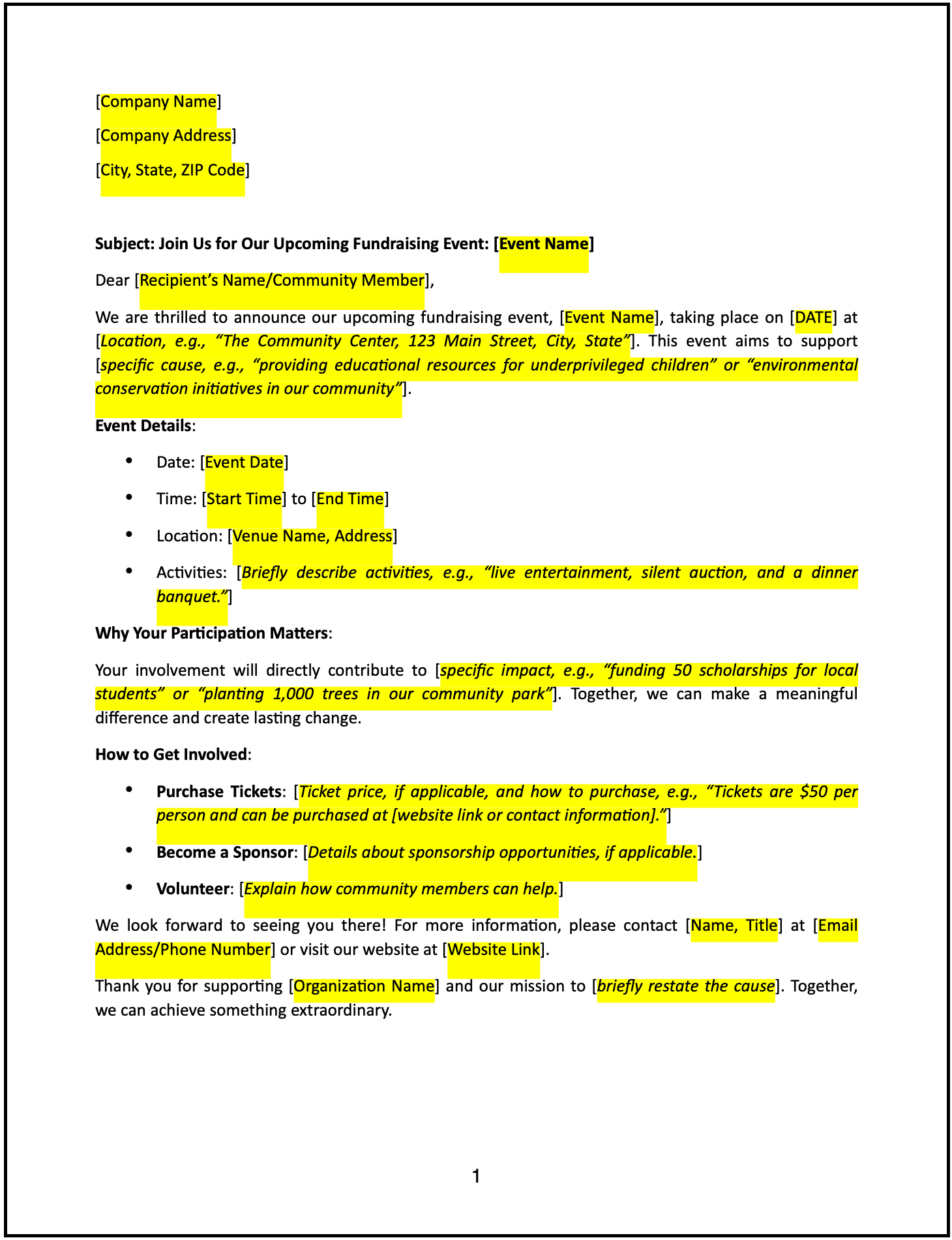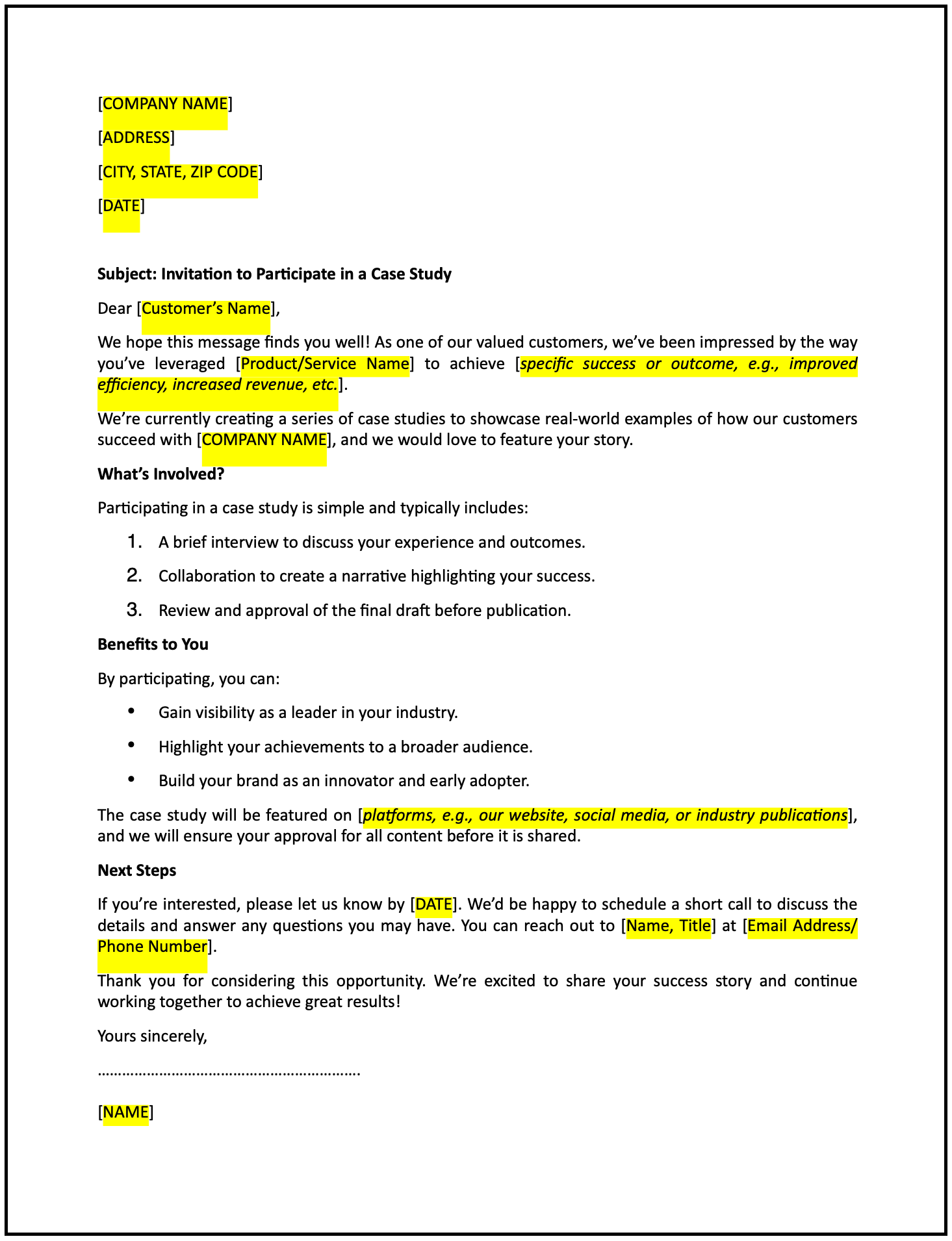Letter of a change in leadership or organizational structure: Free template

Letter of a change in leadership or organizational structure
A notification letter of a change in leadership or organizational structure is a formal way to inform stakeholders, employees, or other relevant parties about significant changes in the company’s leadership or structure. This letter ensures transparency, explains the rationale, and outlines the impact of the changes.
How to use this letter of a change in leadership or organizational structure
- Open with the purpose: Begin by clearly stating that the letter is to inform recipients about the change in leadership or structure.
- Specify the change: Clearly describe the changes, such as new leadership appointments, promotions, or reorganized teams.
- Provide context: Briefly explain the rationale behind the change, such as strategic growth, market demands, or operational improvements.
- Highlight the impact: Describe how the changes will benefit the organization and any effects stakeholders should be aware of.
- Reaffirm stability: Emphasize the organization’s commitment to continuity, values, and strategic goals.
- Offer support: Provide resources or contacts to address questions or concerns about the changes.
- Maintain a professional tone: Ensure the letter is respectful, transparent, and forward-looking.
- Provide contact information: Include details for recipients to reach out with further inquiries.
Benefits of using a letter of a change in leadership or organizational structure
This letter template ensures a structured and professional way to communicate changes while fostering trust and alignment. Here’s how it helps:
- Promotes transparency: Clearly outlining the changes builds trust and minimizes confusion.
- Reflects professionalism: A well-crafted letter demonstrates respect for stakeholders and employees.
- Encourages engagement: Communicating the benefits of the changes fosters buy-in and alignment with organizational goals.
- Supports continuity: Reassuring recipients about stability and future plans reduces uncertainty.
- Provides documentation: A formal record of the communication is valuable for internal and external purposes.
Tips for writing an effective letter of a change in leadership or organizational structure
- Be specific: Clearly describe the changes, including names, roles, and new reporting structures if applicable.
- Use professional language: Maintain a respectful and forward-looking tone to inspire confidence.
- Highlight the rationale: Briefly explain the reasons for the change to provide context and alignment.
- Include next steps: Mention any actions or updates stakeholders should expect, such as introductory meetings or strategy adjustments.
- Keep it concise: Focus on the key points while ensuring the tone is clear and professional.
Frequently asked questions (FAQs)
Q: What details should I include in this letter?
A: Include the change details, rationale, impact, benefits, and any next steps for stakeholders.
Q: Should I personalize the letter?
A: Addressing stakeholders collectively or individually, depending on the audience, ensures clarity and attentiveness.
Q: Who typically sends this letter?
A: Senior leadership, the board of directors, or the HR department usually sends this letter.
Q: How formal should this letter be?
A: The tone should be professional yet reassuring, focusing on clarity and confidence in the changes.
Q: When should this letter be sent?
A: Send the letter promptly after finalizing the leadership or structural changes to ensure timely communication.
Q: Can this letter include an introduction to the new leader?
A: Yes, including a brief introduction and credentials of new leadership enhances transparency and trust.
Q: Is acknowledgment from the recipient required?
A: While not mandatory, encouraging acknowledgment ensures recipients are aware of and aligned with the changes.
This article contains general legal information and does not contain legal advice. Cobrief is not a law firm or a substitute for an attorney or law firm. The law is complex and changes often. For legal advice, please ask a lawyer.


